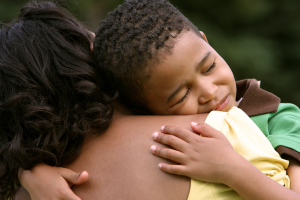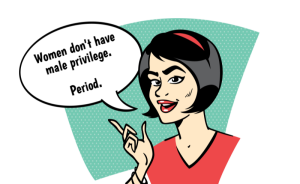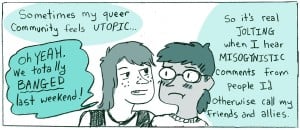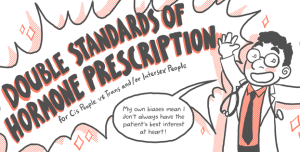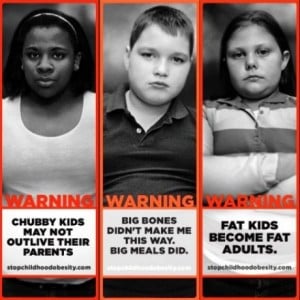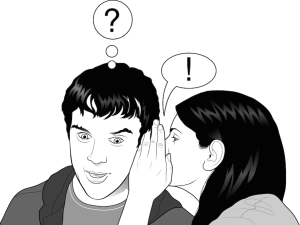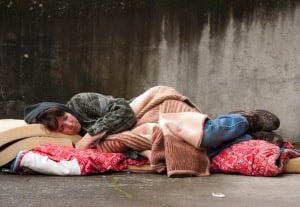
Source: Raw Women
Originally published on Mic and cross-posted here with their permission.
Public officials and the relatively financially secure have long been guilty of turning the homeless and the poor into scapegoats — and making examples of the people perhaps in most need of compassion and help from their neighbors.
It happens everywhere in America. And it’s also become all too common in most Western countries around the world.
Just last week in Florida, the Ft. Lauderdale City Commission made it a crime for anyone to sleep publicly downtown, or for panhandlers to approach cars at “busy intersections.” According to the Sun Sentinel, the infractions are punishable by $500 and 60 days in jail. That’s money and time many people just can’t afford to spare.
And earlier this year in London, one luxury apartment building installed so-called “anti-homeless spikes” near entranceways to keep the homeless from sleeping in those spaces.
This is no way to treat people who are less fortunate. But more than that, it betrays a serious lack of empathy toward those who might be in need of shelter.
More than 600,000 people in America are homeless. Ignorance and the perpetuation of a number of stereotypes has led to the creation of rigid categories of the haves and have nots.
But it doesn’t have to be that way. Much can be done to help ensure virtually no American has to forage for food or search/create their own shelter.
Everyone can start by consciously challenging the deeply ingrained myths and questions people think about the homeless.
1. Why can’t you get a job like everyone else?
For a job interview at a bank or even a burger joint, candidates need clean clothes, shoes in good condition, a shower and hygienic products so that they can appear as their best selves. Resumes, transportation, and a stable telephone number are also needed.
Even if they have marketable skills, most homeless and poor people are just trying to survive at the most basic level of Maslow’s hierarchy of needs: a time-consuming search for food, water, and shelter.
And in an environment where jobs requiring relatively low amounts of skill aren’t paid living wages — especially within the retail and fast-food industries — even homeless people who are able to secure an interview are likely to end up part of the “working poor,” as chronicled by Barbara Ehrenreich in Nickle and Dimed.
2. How do you not have housing by now if you’ve been panhandling?
The idea that panhandlers are mostly lazy scammers who actually haul in hundreds of dollars a day has been around for some time.
Fox News pundit John Stossel famously went “undercover” for a segment on the population in 2013, reporting back that he’d done “pretty well” for himself and calling anyone who gave money on the street “enablers.” Then there are the cases of people like Shane Warren Speegle, who claimed he made $60,000.
Putting aside the fact that these claims are impossible to prove, the myth of the “millionaire panhandler” has since been debunked (at least anecdotally) by multiple investigations and surveys.
In San Francisco, for example, the Union Square Business Improvement District surveyed panhandlers over a two-day period in March and found that “the typical panhandler is a disabled middle-aged single male who is a racial minority and makes less than $25 per day.”
Not exactly a lucrative business model.
3. Why are you all addicted to drugs and alcohol?
It’s one of the top reasons most passers-by refuse to give panhandlers any money: The widespread stereotype that homeless people only want money for liquor and drugs.
First of all, many homeless live clean and sober lives.
But for those who do suffer from addiction, the issue is far from black and white. In some cases, an individual might have become homeless because an addiction went untreated for too long and wrought havoc on that person’s life.
In many other cases, drugs become a coping mechanism after having to live on the streets. According to the National Coalition for the Homeless, addictions should be viewed as illnesses and require health care treatment, counseling and support to overcome — resources often not afforded to the homeless or unattainable because of cost.
Meanwhile, drug treatment programs remain under constant attack by unscrupulous politicians.
4. Why aren’t you sleeping in a shelter instead of the streets?
There are simply not enough shelter beds to go around in most cities — that is, if a homeless person lives in an area where shelters even operate.
In New York City alone, the situation has deteriorated so badly that homeless youths sued the city in January for failing to provide adequate shelter, according to the New York Post.
Young people ages 16 to 20 make up about 3,600 of the city’s homeless population of nearly 55,000 people. And, on any given night, there are only shelter beds for 235 of them, according to the according to the Post.
And then there’s the quality of the shelters themselves. As the Coalition for the Homeless notes, “Municipal shelters can be very difficult places to live … Nearly all municipal shelters for homeless single adults have barracks-style dormitories with as many as 100 beds in a single room, and these arrangements often do not suit the needs of homeless people living with serious mental illnesses like PTSD or mood disorders.”
5. Why do you keep dirty habits like urinating in public transit facilities?
It’s easy to take for granted having a home, a job or being able to dine at restaurants where there’s at least one working bathroom. Those essential facilities are all but guaranteed for homeless people.
A lack of public restrooms means homeless are forced to try their luck at fast-food restaurants, many of which post “customer only” restrictions or bathroom pass codes, a barrier that ostensibly homeless-proofs the facility.
Thankfully, some projects in various locales seek to restore some dignity to homeless people who need safe spaces to use the bathroom.
The problem has reached a crisis point in many areas. Salem, Oregon Mayor Anna Peterson recently noted that while working with homeless people this winter, she noticed a common refrain.
“They didn’t ask me for money. They didn’t ask me for food. They didn’t ask me for a place to live,” she said, according to the Associated Press. “They only asked for toilets.”
Still the fact remains: People who have homes to return to each evening, they have a pot to piss in — the homeless can’t say the same.
6. How can you have a pet if you can’t even take care of yourself?
Pets are often sources of fun and companionship — a precious commodity, especially if you live alone or struggle with an issue such as depression. According to Pets of the Homeless, there’s a sense of normalcy and reality that comes from providing food and water for pets.
There’s also a protection factor, given that this is about surviving life on the streets — absent a home with a basic lock and key — and there are very real threats of robbery, assault, or violence.
University of Colorado sociology Professor Leslie Irvine explored the phenomenon in her book My Dog Always Eats First.
“Homeless people told [Irvine] how their dogs encouraged interaction with others and kept them from becoming isolated,” wrote Marc Bekoff in a review.
“Former addicts and alcoholics described how their animals inspired them to get clean and sober. People who had spent years on the streets explained how they responded to the insults they heard from strangers who thought they should not have a pet. And they praised those who provided pet food and a kind word.”
7. What’s stopping you from taking your medication for mental issues?
One of the most important elements of retaining job security or stable income is the ability to get basic health care. It’s one thing to have access to seeing a doctor, but affording the medication is an entirely different issue.
Unfortunately, because homeless people aren’t making a stable living, they can’t afford medication if there’s no way for them to find adequate assistance.
The National Homeless Coalition notes that even public assistance programs may not be able to effectively help homeless people because some individuals have complex issues that require sophisticated treatment and observation.
Meanwhile, since 2008 programs that included mental health treatment and assistance to the homeless faced massive cuts that made the situation even worse.
8. Can’t you just return to your family?
Not everyone has the privilege of having a supportive family.
An individual may very well be without a family they can return to for any number of reasons.
Perhaps their parents died, and they don’t have a large extended family they can depend upon. Or, in another case, they left an abusive home situation, decided to strike out on their own and ran into trouble financially or health wise.
And there’s even the reality, as is the case for most LGBTQIA+ young people, that their parents kicked them out for simply being who they are.
9. Why couldn’t those LGBTQIA+ kids just come out when they got older?
A related question to the one about family, the discussion should really be about homophobia in the home.
America needs to work to create supportive environments for LGBTQIA+ youth, rather than blame them for being kicked out.
According to a 2012 study by the Williams Institute, nearly half of all homeless youth identify as LGBT, a significant number of them identifying as people of color. And of those homeless LGBTQIA+ youth, nearly 70% of them encounter family rejection or abuse in the home, where the people who should be protecting them only hurt them instead.
It’s the same fate that recently befell Daniel Pierce, a 19-year-old from Kennesaw, GA, who was kicked out and beaten by his family during a failed “pray away the gay” intervention.
After a video of the encounter went viral, the Internet raised nearly $100,000 for Pierce, who donated it to the youth shelter that’s taking care of him. But, in reality, it’s a fortunate break not all homeless LGBTQIA+ youth receive.
10. Why do you think you deserve to keep your kids if you can’t afford them?
It’s not a matter of affordability.
According to the National Coalition for the Homeless, 23% of homeless people in 2007 were members of families with children.
The principal causes, according to the same report, include low wages due to substandard working conditions, unsteady employment, and lack of affordable housing alternatives.
All of these problems can create a vicious cycle where most individuals can be a few paychecks away from living on the streets. And that includes a person or couple with at least one child, which they were able to support until circumstances took a turn for the worst.
As for homeless mothers, the jarring reality is often compounded by domestic violence, as a 2005 survey revealed that roughly 25% had experienced physical abuse within the past year, with other estimates ranging even higher.
11. Who would ever let themselves get into such a terrible situation?
The conversation about homelessness shouldn’t be whether an individual could possibly end up homeless because, in truth, it could happen to virtually anyone.
Instead, Americans need to take a closer look at government policies, including the funding of social safety net programs, wage fairness and a tax code that doesn’t favor the nation’s wealthiest, so that there is more awareness for the root causes of homelessness around the nation.
As a country with ample resources that could quite possibly be allocated to make homelessness history, we’re simply not doing enough.
[do_widget id=”text-101″]
Derrick Clifton is a Staff Writer at Mic covering identity, culture and politics. A news commentator and reporter on issues of race, gender and sexuality, Derrick is also a master’s candidate at the Medill School of Journalism. Derrick identifies as a Black, queer, gender non-conforming, urban-raised person of faith with a disability. He’s also the author of the forthcoming book HEART WERK, a autobiographical series of essays about navigating life and love within multiple marginalized identities. Follow him on Twitter @DerrickClifton.
Search our 3000+ articles!
Read our articles about:
Our online racial justice training
Used by hundreds of universities, non-profits, and businesses.
Click to learn more







